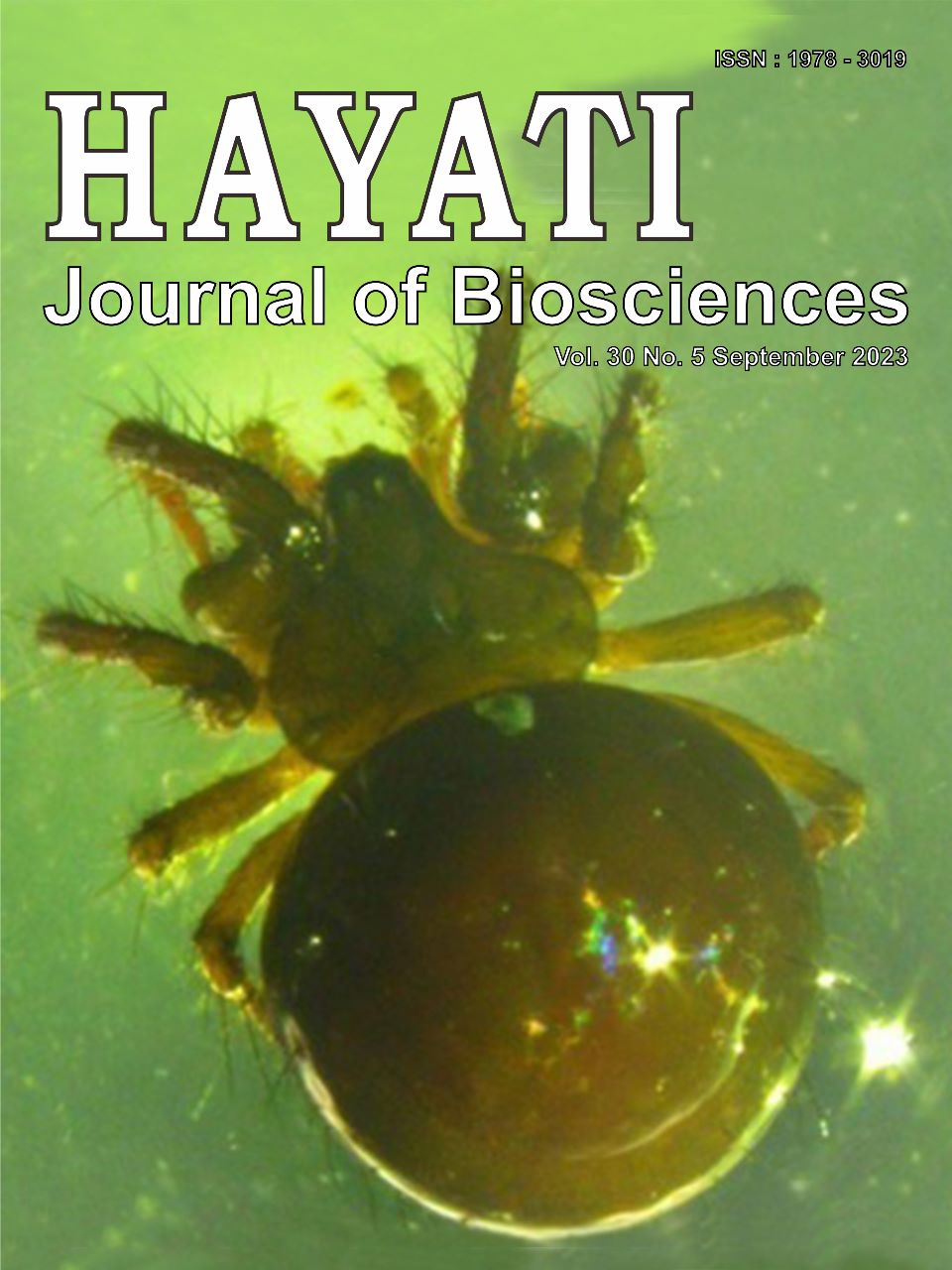The Effect of Different Hydroponic Types and Nutrient Concentrations on the Chemical Composition and Antioxidant Capacity of Purwoceng (Pimpinella pruatjan) Extract
Abstract
Purwoceng (Pimpinella pruatjan) is an Indonesian native plant but difficult to cultivate. Hydroponics can be used as a solution for purwoceng cultivation. Hydroponic types and nutrient concentrations can affect purwoceng’s productivity. This study aimed to determine total phenolic content (TPC) and total flavonoid content (TFC), changes in steroid, and antioxidant capacity due to two hydroponic types (nonrecirculating and recirculating drip) and three nutrient concentrations (1,000, 1,500, and 2,000 ppm). Purwoceng was determined for its moisture content, ash content, and dry weight, and extracted with ethyl acetate for gas chromatography-mass spectrometry analysis and with ethanol for TPC, TFC, and antioxidant capacity. The data were analyzed statistically and grouped using principal component analysis (PCA) and heat map analysis (HMA). Nonrecirculating drip with high nutrient concentration at the aerial part was the best treatment to produce high TPC, TFC, and antioxidant capacity. There were no significant changes in steroid content. PCA showed that purwoceng extracts could be grouped in to two groups, i.e. aerial and root groups. HMA showed that purwoceng extracts could be distinguished from the abundance of palmitic acid and stigmasterol. The antioxidant capacity of purwoceng was directly proportional to the TPC value and also related to the presence of phytol, stigmasterol, and palmitic acid.
Downloads
Copyright (c) 2023 Irmanida Batubara, Shadila Fira Asoka, Eni Sumarni, Herry Suhardiyanto, Mohamad Solahudin, Slamet Widodo, Supriyanto, Eti Rohaeti, Yudiwanti, Folkes Laumal, Erniati

This work is licensed under a Creative Commons Attribution-NonCommercial 4.0 International License.
HAYATI J Biosci is an open access journal and the article's license is CC-BY-NC. This license lets others distribute, remix, tweak, and build upon author's work, as long as they credit the original creation. Authors retain copyright and grant the journal/publisher non exclusive publishing rights with the work simultaneously licensed under a https://creativecommons.org/

























.png) IPB University
IPB University Department of Biology
Department of Biology The Indonesian Biological Society
The Indonesian Biological Society 

